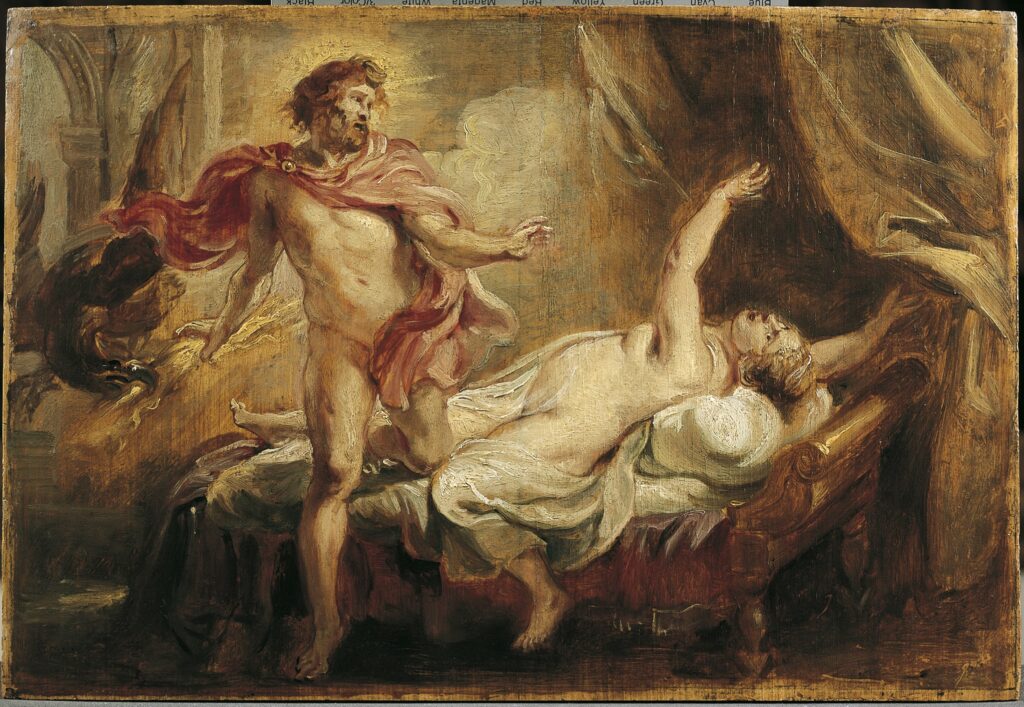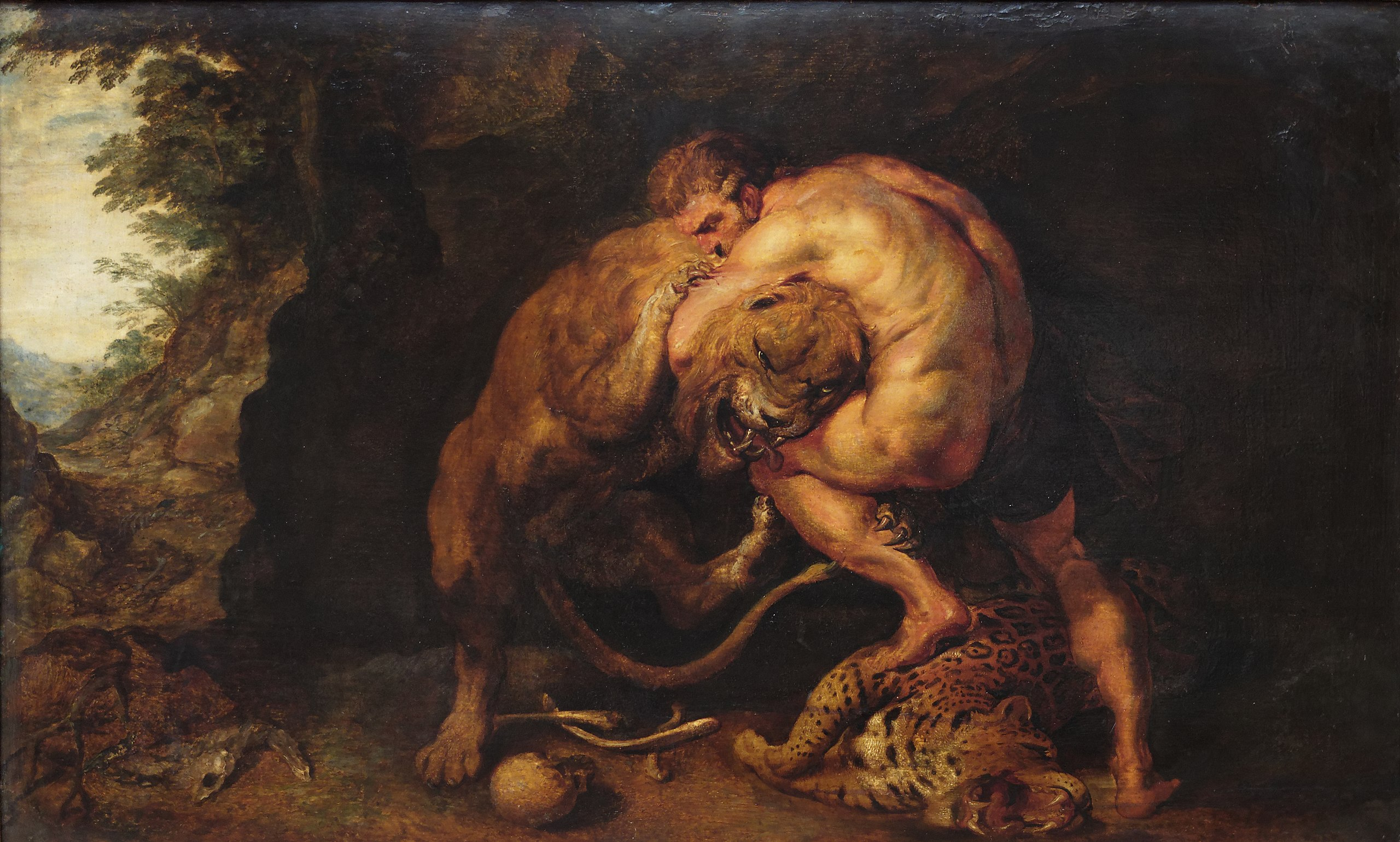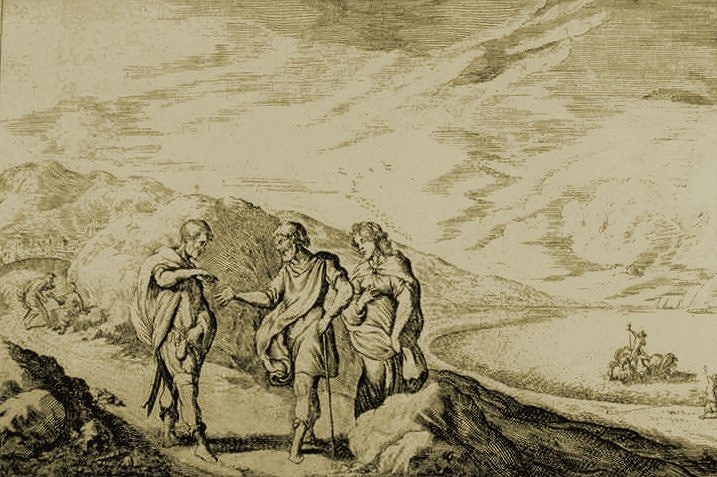AI-generated article summary
Semele was a mortal woman who became the lover of Zeus, King of the Olympian gods. Their affair resulted in a pregnancy, and Zeus’s jealous wife, Hera tricked Semele into asking Zeus to show himself to her in all his glory. Unaware that mortals cannot look upon the face of a god without being incinerated, Semele gazed upon Zeus and was consumed by flames. All that remained of her was a charred skeleton. Shortly after, Zeus rescued their unborn child, Dionysus, from Semele’s womb and took him to Mount Olympus.
The tragic story of Semele has been told for centuries, serving as a cautionary tale about the dangers of overreaching ambition and pride. It also highlights the powerlessness of mortals in the face of divine will. Despite her tragic end, Semele remains an important figure in Greek mythology as the mother of one of the most popular gods – Dionysus – whose festivals were celebrated with great abandon and joy.
Discover the story of Semele and the tale of her ill-fated love affair with Zeus. Learn about the birth of Dionysus and how she became an exemplary figure for mortals who overestimate their power.
The Story of Semele
The Love Story of Zeus and Semele
Semele is a figure from Greek mythology who plays an essential role in the narrative of Zeus and Hera. She is the daughter of Cadmus, king of Thebes, and the goddess Harmonia. It is also said that Semele was a priestess of Zeus himself.
While observing her humbly slaughtering a bull for an offering on his altar, Zeus fell deeply in love with her and secretly visited her many times afterward.
Zeus’s affair with Semele, a mortal princess, caused trouble when her jealous wife, Hera, found out. In a fit of rage, she decided to use trickery to exact her revenge.
Semele and the Wrath of Hera
Hera disguised herself as an old woman and became friends with Semele, who confided in her that her beloved was none other than Zeus.
Hera, ever the clever trickster, pretended not to believe her and created confusion and doubt within her. Because of this, Semele asked Zeus for a wish. Zeus promised Semele whatever she desired if she asked for it – a promise he swore on the sacred River Styx.
Semele asked Zeus to show himself in all his majesty as proof of his godhood. Zeus was taken aback and tried to tell her not to ask for something that dangerous, but she persisted. Zeus had to keep his promise, so he reluctantly revealed his true form in all its brilliance, burning Semele with lightning.
Witty yet cruel, Hera’s plan had worked perfectly – Semele got what she asked for, although it came at a cost.



Zeus rescued their unborn child, Dionysus
Luckily, Zeus could intervene and pluck their unborn baby from Semele’s womb before it perished in the flames. He graciously sowed the infant into his thigh until he was sufficiently grown to be naturally birthed. They name the baby Dionysus, meaning “twice-born,” and describe how Zeus cleverly saved him. After this, Hermes took Dionysus to be cared for by some maenads.
Alternative versions of the Story of Dionysus’s Birth
Dionysus’ birth story has several versions, but all end in the same. In the one from Crete, Dionysus was born to Zeus and Persephone. Witty Hera wanted to get rid of him and asked the Titans to kill him.
Armed with thunderbolts, Zeus fiercely battled and defeated the Titans. However, all of Dionysus had been devoured- except for his heart. By ingesting the pieces of his heart, Zeus fashioned a potion that he gave to Semele; this act caused her to become pregnant.
Another version of the story states that instead of providing it for Semele, Zeus consumed the tonic to impregnate her with his seed.
Following another version of the myth, Hera then compelled Semele to ask Zeus to show his divine form – which proves fatal for her. Still determined to save the premature baby’s life, Zeus hides him in his thigh until he is ready to be born.
All versions of the story are pretty striking, and it’s no wonder Dionysus is one of the most important gods in Greek mythology.
The Resurection of Semele
When Dionysus matured, he embarked on a mission to free Semele from the depths of Hades. Boldly crossing into the Underworld and breaking her away from death’s hold, Dionysus brought his mother back to Mount Olympus, where she was transformed into a divine being. As a goddess in her own right, Semele watched over those who partook in the righteous exaltation of her son as they celebrated him with wild abandon.
Triumphantly Conquering Hera’s Wrath with Dionysus
The wrath of Hera was a continuous force with which Dionysus had to contend throughout his life. The goddess’s frequent persecutions made her presence palpable, unrelenting, and unavoidable until Dionysus finally attained the rank of god.
Though this ascent took many years, his ascension to the realm of wine and revelry arguably made all he endured worthwhile. Indeed, about Dionysus’ journey, it can be said that what doesn’t kill you makes you stronger.
Despite Hera’s powerful hatred, Dionysus endured and rose like a phoenix from the ashes of repressed joy and delight into new heights of Glory as the beloved God of wine and revelry.
What is the moral of the story of Semele?
The story of Semele and the wrath of Hera is a powerful reminder not to take anything for granted, especially when it comes to making wishes.
It also serves as an example of how sometimes our actions or desires can have unforeseen consequences that can be difficult to undo or reverse. Additionally, the myth highlights the importance of personal responsibility and demonstrates the power of resilience and perseverance in the face of adversity.




